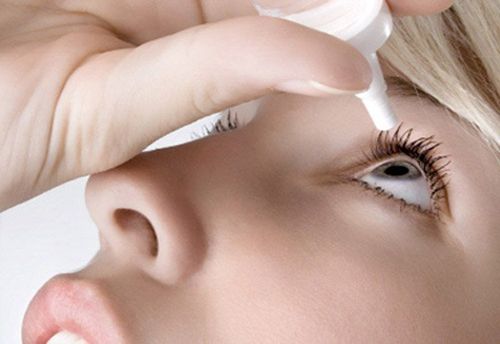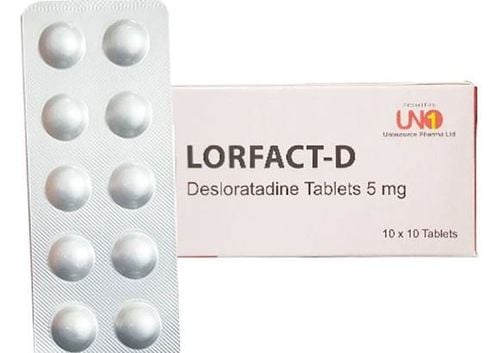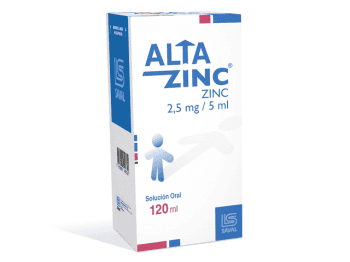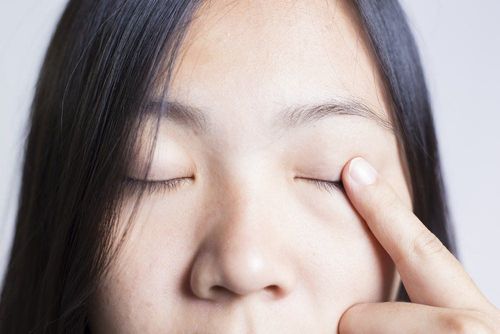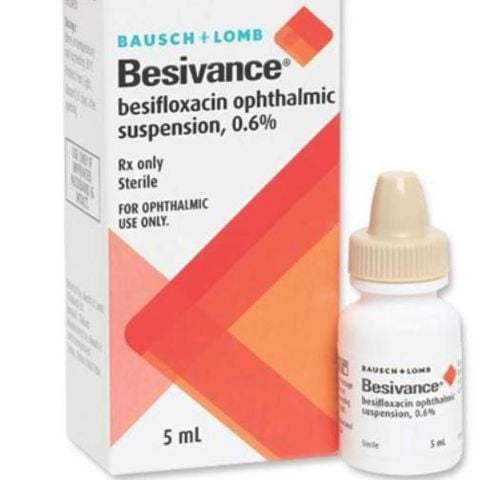This is an automatically translated article.
The article is professionally consulted by Master, Doctor Hoang Thanh Nga - Ophthalmologist - Department of Medical Examination and Internal Medicine - Vinmec Ha Long International General Hospital.
When the eye twitches, the eyelid will blink and you cannot control it to stop. Sometimes the eye muscle twitches continuously affecting both eyes. The eyelid twitches rapidly and continuously for 1-2 minutes.
1. Eye twitching overview
Continuous twitching of the eye muscles is painless, usually harmless and will go away on its own. But if the spasm is intense, your eyelids may have to close completely and then reopen, repeatedly affecting your ability to see.
Some people have eye muscle twitching throughout the day, and even for days, weeks or months. This will cause discomfort and quite affect the quality of life.
In rare cases, eye twitching that doesn't go away will cause you to blink or squint all the time. If you cannot keep your eyes open normally, it will be difficult for you to see well.

You should see a doctor if:
Eye twitching lasts more than 1 week; Your eyelids should be completely closed; Other facial muscles are also contracted; Red, swollen, or watery eyes; Upper eyelid drooping. If eye twitching is suspected to be caused by brain- or nerve-related problems, your doctor will check for common accompanying signs. You may then be referred to a specialist for treatment.
Trắc nghiệm: Bận rộn có ảnh hưởng đến sức khỏe của bạn không?
Cuộc sống hiện đại khiến chúng ta vì quá bận rộn mà quên chăm sóc sức khỏe cho chính mình. Ai cũng biết rằng lịch trình làm việc cả ngày có thể khiến bạn kiệt sức, nhưng cụ thể bận rộn ảnh hưởng thế nào tới sức khỏe? Hãy cùng làm thử bài trắc nghiệm dưới đây.
2. Types of eye twitching
2.1. Mild eye twitching Eye twitching mild and temporary is often related to lifestyle factors, such as:
Fatigue; Stress; Sleepless ; Abuse of alcohol, tobacco or caffeine. Constant twitching of the eye muscles can also result from irritation of the eye surface (cornea) or the membrane lining the eyelids (conjunctiva).

2.2. Eye twitching Benign nystagmus usually appears in middle age and gets progressively worse. Only about 2,000 people in the United States are diagnosed with the condition each year. Women are twice as likely to be disabled as men. Eye twitching is not a serious condition, but severe eye muscle twitching can interfere with your daily life.
This condition starts when your eyes blink non-stop or often have eye irritation. As the disease progresses, you may become more sensitive to light, experience blurred vision, and constrict other muscles in your face. In severe cases, the spasm can become so intense that your eyelids have to droop for several hours.
Researchers believe this is the result of a combination of environmental and genetic factors. Although benign nystagmus is often random, there are sometimes similarities between family members.
2.3. Hemifacial Spasm is a rare disease that affects the muscles around your mouth and eyelids. Unlike the above two types, this condition usually affects only one side of the face.
Usually, the cause of hemifacial spasm is an artery compressing the facial nerve.
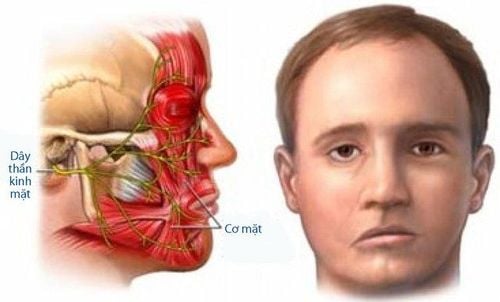
3. Causes of eye twitching
The cause of blepharospasm is unknown, but doctors think eye twitching may be related to:
Fatigue ; Stress; Caffeine . Sometimes, eye twitching can be a sign of a more serious condition, such as:
Blepharitis ; Dry eyes ; Sensitivity to light, wind or polluted air; Pink eye (conjunctivitis).
Rarely, eye twitching with signs of brain or neurological disorder, namely:
Facial nerve palsy (Bell's Palsy); Dystonia (dystonia); Parkinson disease ; Tourette's syndrome (a neurological syndrome in young adults that causes many motor and vocal tics). Constant twitching of the eye muscles can also be a side effect of certain medications. The most common are medications for mental disorders and epilepsy.

4. Treatment of eye twitching
4.1. Home remedies
Most mild eye twitches will go away on their own. You just need to get enough rest and cut down on your alcohol, tobacco and caffeine consumption. If dry or irritated eyes are the cause of mild eyelid spasms, try eye drops with an (over-the-counter) artificial tear solution.
4.2. Injecting anesthetic
To date, doctors have not found a cure for benign eye twitching. But there are ways to limit the severity of the disease. Of these, the most widely used treatment for both eye and whole face spasms is botulinum toxin injections (Botox, Dysport, Xeomin).
After injecting a small amount of numbing agent into the eye muscles, the spasmolytic effect will last for a few months and then fade away. Therefore you need repeat treatment.
4.3. Medication
In mild cases, your doctor may recommend medications such as:
Clonazepam (Klonopin); Lorazepam (Ativan); Trihexyphenidyl hydrochloride (Artane, Trihexane, Tritane). However, these drugs are usually only effective in the short term.

Alternative treatments have been proven effective by many scientific studies, including:
Biofeedback therapy - Biofeedback; Acupuncture; Hypnosis; Chiropractic treatment; Nutritional therapy; Wear specialized colored glasses.
4.5. Surgery
If all treatment options are unsuccessful, your doctor may recommend surgical removal of some of the muscles and nerves around your eyelids.
Surgery can also relieve arterial pressure on the facial nerve, which causes hemifacial spasms. The results of successful surgical treatment are permanent, but also come with some of the same risks as any surgery.
In short, eye twitching is a condition in which the muscles in the eyelids move or contract abnormally, out of control. Most people have experienced a sudden, sudden, irritating sensation of eye muscle twitching that goes away after a few seconds. However, if this happens often and for a long time, you need to pay close attention and see a specialist to find out the cause.
To register for eye examination and consultation at Vinmec International General Hospital, customers can contact Vinmec Health System nationwide or register online HERE.
Reference source: webmd.com




